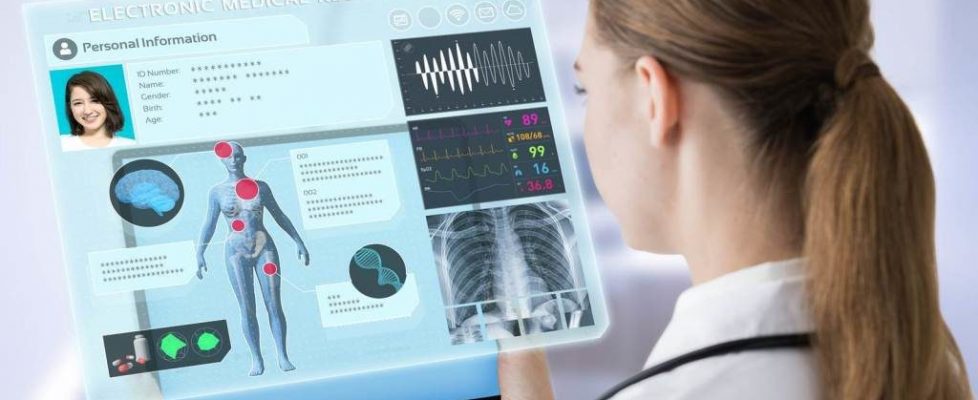Digital evolution in healthcare is making a critical difference
Addressed holistically, India could not only leapfrog and become a model for digital health adoption, but healthcare could well be India’s primary driver of growth and employment.
By Anil Nair
The global pandemic has brought healthcare under the lens like never before. While hospitals and healthcare providers are manning the frontlines to limit the spread of the virus, many nations see this crisis-induced impetus as the time to strengthen healthcare delivery, with technology enabling enhanced agility, affordability and accessibility.
As a market, India is displaying a growing appetite for digital alternatives to healthcare. Illustratively, according to an EY and the Indian Pharmaceutical Alliance (IPA) study, post Covid-19,64% of consumers are willing to adopt teleconsultation and that market is set to reach $5.5 billion by 2025.
To help organizations innovate anywhere (any cloud or on-prem) , IBM has integrated decision optimization tecxhnology within its multicloud Data and AI platform. In this webinar, we will also demonstrate how data scientists can easily get started with opt
This is bolstered by the Indian Government’s efforts to supplement India’s outlay for the healthcare sector. The Government recently announced the world’s largest health insurance scheme, with the 2020 allocation at $9.3B. This universal health coverage plan for 100 million families includes transforming 150,000 Health & Wellness centers to provide free diagnostic services and hospitalization coverage, the premium for which will be covered substantially by the Government.
Let’s also look at the diverse areas that other governments are focusing on to step up the efficiency of their healthcare systems:
- Singapore is testing the use of robots for patient care and drones for transporting medicines and equipment
- Australia’s focus on electronic patient records and standardization of clinical terminology is notable
- Japan introduced a Medical Big Data Law in 2017 to harness data to create its next-gen healthcare system and included telemedicine consultations under health insurance in 2018
The imperative for digital transformation
Despite these measures, the reality is that in most countries, the healthcare system is still falling short of rising customer expectations in terms of quality service delivery and outcomes at affordable rates. This can be traced back to continuing shortages in doctors and professional caregivers, systems that are not integrated, shortcomings in post-discharge care, secure and comprehensive healthcare data, easy availability of products and services, standards, galloping costs, and scale issues. It’s a call for innovation!
Telemedicine carts are being used in several hospital ICUs in India and Taiwan. They keep doctors safe while interacting with afflicted patients. Additionally, doctors can now consult with more patients per day, patients can connect with their families remotely, and families can participate in doctoral consultations.
In Germany, a medical bus travels to rural villages so an aging population can get attention at their doorstep. Improved patient scheduling, secure access to patient records, and electronic note-taking are creating efficiencies. Connecting to an expert at any other location is now easy.
Another interesting project in Germany is being involves an insurance provider. An app enables patients to set up appointments on their smartphone, share medical records, capture prescriptions, and accomplish end-to-end tracking easily. The entire insurance process is getting streamlined, and the difference becomes even starker during an emergency when speed is of the essence.
Universities in Australia are researching how to advance healthcare virtualization and are embedding collaboration tools in clinical practice to establish a set of tested high-value clinical cases – covering improved access, security, location tracing, task monitoring, and management in primary and acute healthcare scenarios.
At a multi-specialty Taiwan hospital that handles 10 million hospitalization cases and outpatients every year, AI is helping in cancer detection and remedial innovation.
Brazil is making steady progress in developing a remote patient monitoring platform for post-operative care, and 3000 pharmacies in Portugal are coming together to improve their digital infrastructure to support the national health plan.
These are just a few examples of digital interventions that will shape next-generation healthcare.
Emerging global trends in telemedicine
We are seeing many trends at this time. Let me enumerate some of them:
- The rise of on-demand healthcare with patients wanting care at their convenience and time
- The increasing use of wearables to collect health data round the clock like the heart rate, sugar levels, oxygen levels, or exercise metrics
- Leveraging blockchain for authentic health records
- The use of big data to aggregate and analyze information from social media, e-commerce, and online transactions
- The leveraging of virtual reality for attenuating pain stimuli, integrating visual, auditory, tactile, and olfactory aspects
- The use of AI chatbots for quick responses to routine queries
- And the increasing appeal and use of public, private, and hybrid cloud platforms for rapid digital evolution
Drivers of growth
In a recent article, the CEO of Niti Aayog made some vital points. He highlighted the need for reskilling and augmentation of medical schools to overcome the acute shortage of doctors in India. He reiterated the need to earmark substantial funding for health research to enable the indigenous development of products and solutions and emphasized the need to harness the power of digital health, including a unique identity for patients and a national health stack to link the sector digitally.
It augurs well that the National Digital Health Mission pilot to aid citizens in their diagnosis-to-discharge digital journey is already underway. Addressed holistically, India could not only leapfrog and become a model for digital health adoption, but healthcare could well be India’s primary driver of growth and employment.

